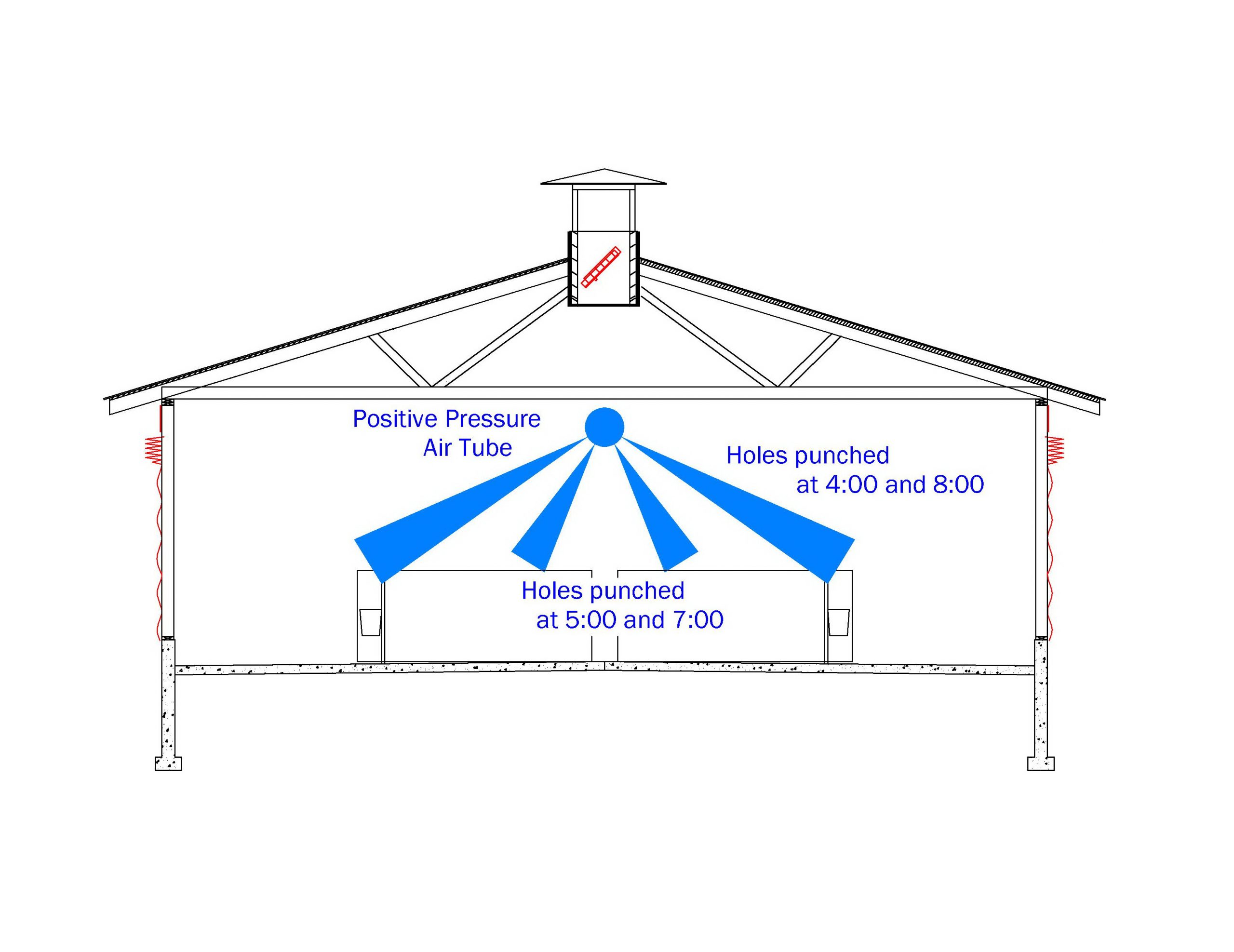 Calf barns or rooms may be ventilated either naturally or mechanically, with natural ventilation mixed with a positive pressure ventilation tube (PPVT) system offering the best of both. The four basic purposes of ventilation calf barns or rooms are to remove moisture in cold weather, heat in hot weather, deliver fresh air consistently, and prevent drafts.
Calf barns or rooms may be ventilated either naturally or mechanically, with natural ventilation mixed with a positive pressure ventilation tube (PPVT) system offering the best of both. The four basic purposes of ventilation calf barns or rooms are to remove moisture in cold weather, heat in hot weather, deliver fresh air consistently, and prevent drafts.
Calves from birth to weaning need 17 m3/h (10 cfm) of fresh air per calf in the winter to remove moisture and 170 m3/h (100 cfm) in the summer to remove heat. However, the actual air exchange needed often exceeds the minimal ventilation needs. Calves need four room air changes per hour in winter and 40 or more in summer. The problem with calves is to give the minimal amount of winter ventilation required uniformly and without drafts.
Natural ventilation works effectively for the most of the year, but during cold weather, calves from birth to weaning do not generate enough heat to provide thermal buoyancy to pull air in through the curtains and out via chimney holes. When the temperature drops too low to offer a decent air pattern naturally, the sidewall curtains may be entirely closed, and a PVVT system can be employed to deliver the least quantity of fresh air.
A PPVT system comprises of a wall-mounted fan that circulates fresh outside air into the calf room or barn. The fan is connected to a distribution tube with evenly spaced perforations that spans the length of the room. The fan brings fresh air in from the outside, pressurizes the tube, and blows it out of each hole to disperse it equally across the room. The fan pressurizes the room, and air escapes via the natural ventilation system, which is commonly through chimneys or cracks around the curtains.
The air tube’s number of openings, size, and spacing are all tailored to fit the room’s geometry. Tubes must be placed to best suit the size and configuration of the space. The hole position and pattern must fit the geometry of the room and the pen configuration. Lightweight plastic may be used for ventilation tubes, however woven polyethylene tubes are more robust and retain their form better. PVC pipe may also be utilized, particularly for tiny duct diameters.
PPVT systems may operate all year to provide air circulation. In hot weather, they do not provide enough ventilation for cooling, but on still humid days with no breeze, they will continue to circulate air. In the summer, air should be spread uniformly, with an aim of 1.3 m/s (250 fpm) for cooling.
Furthermore, providing the correct habitat is simply one aspect in raising calves. Colostrum management, adequate nourishment, particularly in cold weather, and correct preventive health procedures are all critical.









